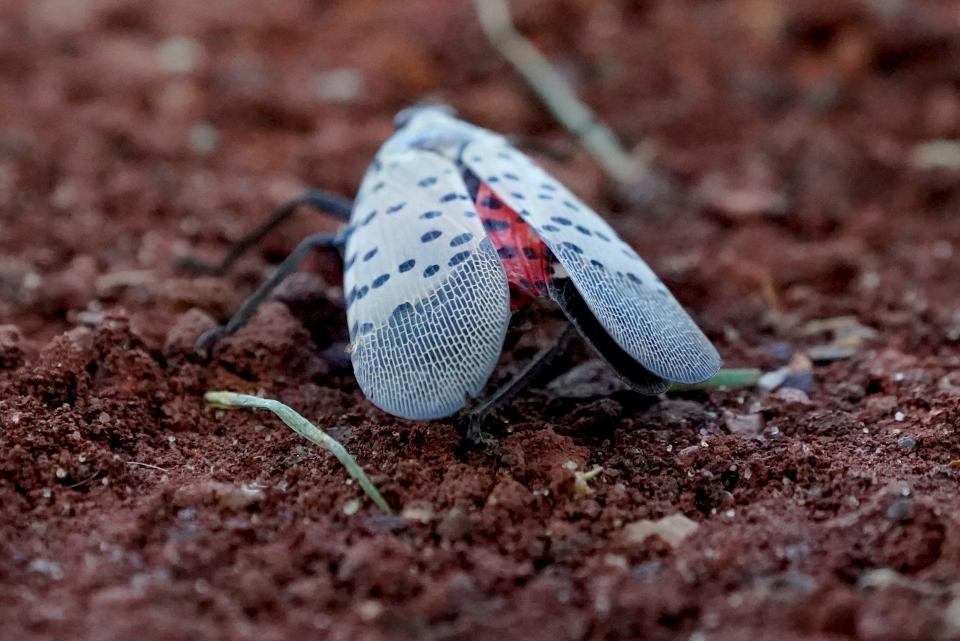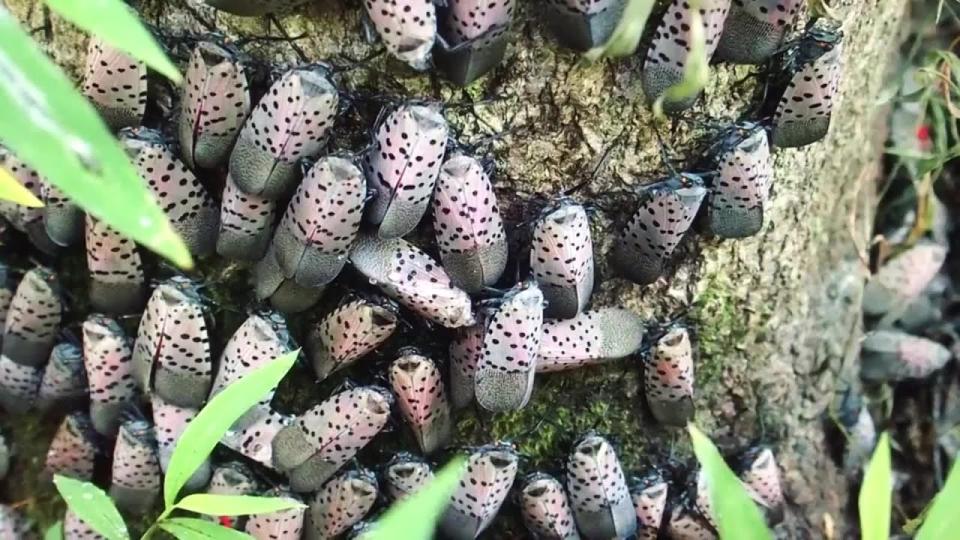It's spotted lanternfly season in Pennsylvania. Why they are bad and how to kill them.
Kill it. Squash it, smash it … just get rid of it.
That's the blunt advice provided by the Pennsylvania Department of Agriculture in its spotted lanternfly alert.
And it is now peak season for the colorful, yet invasive and ecologically harmful spotted lanternfly, which has swarmed the region the past few years.
In fact, the carnage wrought by the spotted lanternfly has caused several municipalities to vouch for citizens to kill the fluttering and brightly-colored insects by any means at their disposal.
What else to know about the spotted lanternfly menace:
Why are spotted lanternflies bad?
Spotted lanternflies were first detected in Pennsylvania in September 2014, and their preferred food happens to be made widely available on thousands of farms here.
According to the U.S. Department of Agriculture, the spotted lanternfly feeds on a wide range of fruit, ornamental and woody trees, with tree-of-heaven being one of the preferred hosts.

Spotted lanternflies return: They're back! What kills spotted lanternflies and what keeps them away?
Spotted lanternflies are invasive and can be spread long distances by people who move infested material or items containing egg masses.
Juvenile and adult spotted lanternflies prefer to feed on the invasive tree-of-heaven and also feed on a wide range of crops and plants, including grapes, apples, hops, walnuts and hardwood trees.
Worse, the Pennsylvania Department of Agriculture notes that spotted lanternflies excrete honeydew, a sugary waste that attracts bees, wasps and other insects and this waste builds up on any surface below the spotted lanternfly.

The build-up of waste also leads to the growth of sooty mold and black-colored fungi.
In illuminating just how bad the problem is, the USDA earlier this month signed off on a five-year strategy to eradicate spotted lanternflies.
Where are spotted lanternflies from?
The spotted lanternfly is native to China.
While spotted lanternflies were first detected in Pennsylvania nearly a decade ago, the species may have been in America for two to three years before that recorded sighting.
Adult spotted lanternflies are about 1 inch long and a half-inch wide at rest. They have black heads and legs, yellow abdomens with black bands and two sets of wings − gray with black spots on top and red with black spots underneath.
They look very different as juveniles, though. The youngest are small, round and black with white spots, and they develop red areas as they grow.
In all, spotted lanternflies go through four life stages, and in the third, during the latter half of the summer, they become larger and more visible.
Possible pathways the spotted lanternfly took to America include tagging along in shipments of imported woody plants, wood products, and other commodities.
What kills spotted lanternflies?
The Department of Agriculture encourages efforts to destroy the Spotted Lanternfly or its egg masses.
Those efforts include physical removal at any life stage, removal of Tree-of-Heaven host trees, and using pesticides.
According to the Penn State College of Agricultural Sciences, birds don't seem to like to eat them, and researchers have not yet found predatory or parasitic insects that are having a great impact on reducing the spotted lanternfly population.
Zombie fungus v. spotted lanternfly: Zombie fungus proves deadly to spotted lanternfly
If one prefers not to interact with a spotted lanternfly at all, residents can report the location through the online spotted lanternfly reporting tool or by calling 1-888-4BADFLY.
This article originally appeared on Bucks County Courier Times: It's spotted lanternfly season in PA. Here's how to kill lanternflies.

